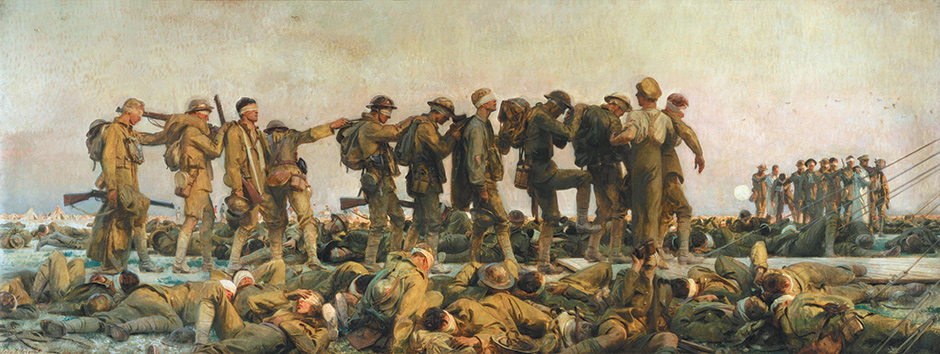In response to:
Syria: Death from Assad’s Chlorine from the May 7, 2015 issue
To the Editors:
Annie Sparrow in “Syria: Death from Assad’s Chlorine” [NYR, May 7] writes that mustard gas “killed more than 90,000 in the trenches of World War I….” Total deaths from all of the gases used in that war were 90,198; since 62 percent of the dead were Russians, where mustard gas was rarely if ever used, her figure is obviously wrong. Perhaps the most relevant statistic from that war is that only 7.3 percent of gas casualties died. Compared to high explosives World War I gases are relatively merciful weapons.
William Van der Kloot
Horley, United Kingdom
Annie Sparrow replies:
I am grateful to Professor Van der Kloot for his clarification. The figure of more than 91,000 represents the collective count of all deaths from chemical agents used with deadly potential by the close of World War I—chlorine, phosgene, cyanogen chloride, and mustard gas. An additional 1.29 million soldiers were injured by these agents and at least thousands of unrecorded civilians killed.
However, his characterization of gases as “relatively merciful weapons” is misleading. As in Syria today, poison gases in World War I were responsible for a fraction of the deaths of conventional explosives but were a potent weapon of terror. If the physical toll is hard to quantify, the psychological fallout is immeasurable.
It is a timely moment to consider chemical weapons. April 22, 2015, marked the hundredth anniversary of the first weaponization of chlorine, when German planes dropped 160 tons into French trenches. Totally unprepared troops understandably panicked, spreading fear well beyond the three miles of targeted front lines. The frequency of gas attacks that followed meant that soldiers already stressed by the ceaseless shelling were pushed into a state of constant fear, incapacitating them far beyond the physical effects of chlorine. “Gasfright” was considered to be as common as shellshock. One British sergeant wrote of soldiers gassed “propped up against a wall…their color was black, green & blue, tongues hanging out & eyes staring.”
As World War I went on, the use of increasingly caustic agents intensified the terror. Soldiers forced to wear gas masks still feared leaks and clogged filters. Mustard gas, a vicious blistering agent, is not just inhaled into the lungs but also directly absorbed through skin and eyes. Masks were poor protection against a gas that soaked through uniforms.
In his World War I Fact Book, Van der Kloot describes gas as a “relatively humane weapon” because it caused frequent hospitalization but few deaths. He overlooks the hundreds of thousands left disfigured, with lung damage or blurred vision. Moreover, the delayed toxicity of mustard gas appeared decades later in chronic lung disease, late-onset blindness, and even death. Mustard gas is a known carcinogen, and the excess deaths due to lung cancer after prolonged exposure during World War I are well documented. Given these delayed consequences, the real death toll from gas in World War I may easily have run to several hundred thousand.
Explosives are hideous, but I understand the public’s special revulsion to chemical weapons. There is nothing merciful about watching your child painfully suffocating, whether due to sarin, which paralyzes the respiratory muscles, or chlorine, which turns into hydrochloric acid as it is inhaled, drowning kids in the dissolution of their own lungs. As a critical care pediatrician I have never seen children die in a more obscene manner.
The use of chemical agents leaves a profound and perhaps permanent psychological residue, rendering the mere threat of use a powerful weapon. In wars of attrition—such as Syria—where the instillation of fear in civilians by the government has long been deliberately used to erode support for insurgents, chemical weapons make perfect sense. Strategic, yes. Merciful, no.




